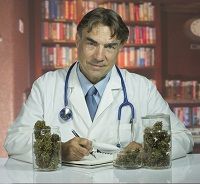Article
Medical Marijuana Often Mislabeled
Author(s):
Medical marijuana is often labeled incorrectly or insufficiently, according to a research letter from JAMA.

The quality and labeling of edible medical marijuana is being called into question, according to a proof of concept study published in JAMA.
Researchers from Johns Hopkins Medicine composed a research letter after investigating the labeling accuracy of edible medical marijuana products in San Francisco, Los Angeles, and Seattle. Using an internet directory of dispensaries, the researchers were able to generate a list of individual businesses which offered at least one edible cannabis product. The researchers centered on 3 common categories that the business could provide: baked goods, beverages, or candy and chocolate. The packaging labels were supposed to supply specific measures of Δ9 tetrahydrocannabinol (THC). THC, along with cannabidiol (CBD), is typically the most concentrated chemical components of cannabis. They are believed to be the chemicals that primarily factor into the therapeutic benefits of medical marijuana.
The researchers obtained 75 edible cannabis products from the dispensaries and analyzed their contents and labels between August and October 2014. Prior research has indicated that the THC:CBD radio should be 1:1 to derive improved clinical benefits and fewer adverse effects.
The researchers defined accurate labels if the THC and CBD content were within 10% of the labeled values. Products were under labeled if the content was more than 10% above the labeled values, and over labeled if the content was more than 10% of what the label stated.
The products, which encompassed items from 47 different brands, were labeled correctly in 17% of the cases. Less than a quarter (23%) of the products were under labeled and 60% were over labeled in respect to the THC content.
“A lot of dispensary owners and medical cannabis proponents make a big case about how therapeutically beneficial CBD is,” explained study author Ryan Vandrey, PhD in a press release “but our testing indicates that a lot of what’s available in the edible cannabis market may have very little CBD.”
Vandrey continued by saying that the principle caveat emptor is not an acceptable practice for the sale of marijuana.
The greatest likelihood for acquiring over labeled products was in Los Angeles, and under labeled products were prevalent in Seattle. Overall, the researchers said, non-THC content was low.
“Edible cannabis products from 3 major metropolitan areas, though unregulated, failed to meet basic label accuracy standards for pharmaceuticals,” the authors wrote. “Because medical cannabis is recommended for specific health conditions, regulation and quality assurance are needed.”
Less than two thirds of the products (59%) had detectable levels of CBD, and just 13% had CBD content labeled. CBD content was over labeled on 4 products and under labeled in 9 products, the researchers discovered.



